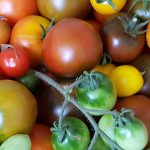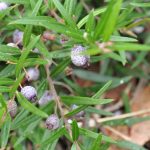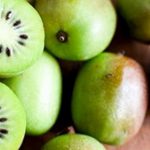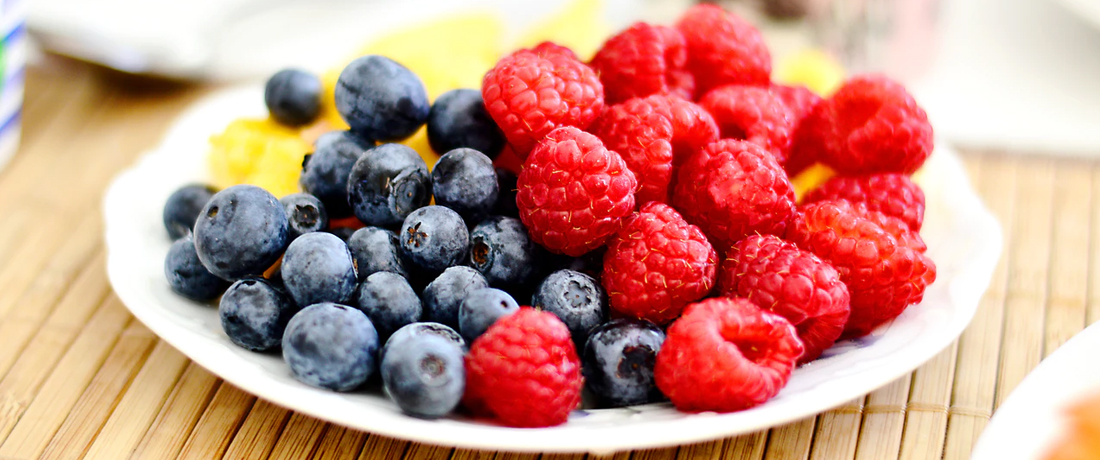
Berries are generally crops for the patient gardener as a long term investment. Most berry plants usually don’t set an abundant crop for a few years, but some are faster, such as raspberries. With careful selection of cultivars, fruit can be produced over several months and used for fresh eating, jams and can be frozen for many months to be used later in desserts.
Designing Berry Gardens
Berry Plants not only provide delicious fruit through the warmer months, but also provide many design options. There are trees, shrubs, vines and groundcovers to select from. They can create features such as cordons, or may be grown over arches or woven cane structures, or trellises to screen off areas or provide shade. Vines can also be trained up walls or over pergolas. Ground covers, such as strawberries can be used to line paving areas or as garden edging. Others may be trained as specimen trees, such as weepers or standards.
Berry plants are usually deciduous providing summer shade, winter sunshine, beautiful autumn foliage colour, pretty spring blossoms, attractive leaves and delicious fruit. Under-plant berries with winter-spring flowering bulbs or vegies or annuals such as Kale, to provide winter interest. Ornamental plants can be interspersed with berries if space allows.
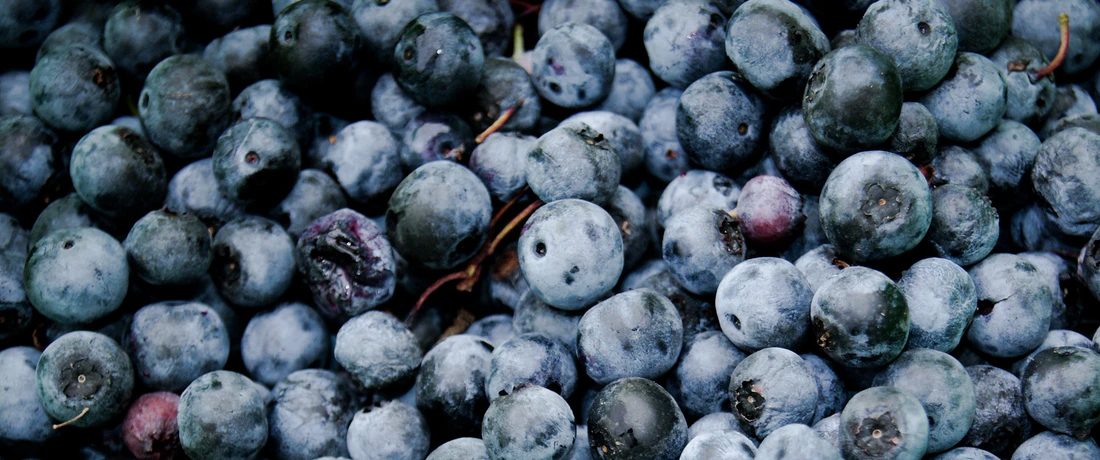
Growing Conditions
Most berry plants are suited to cold, temperate regions with cold, wet winters and hot summers. Most need mulching during summer. Pea or lucerne straw is best for this. The ideal position for the berry plants is in full sun, although some vines and shrubs may take partial shade (Blackberries, Blueberries, Red Currants and Gooseberries).
The soil needs to be well drained and fertile, with similar conditions to the vegetable garden. Berry plants can be mixed with vegetables, herbs and annuals. The best time to plant berry producing plants is in winter when the largest range of plants are available.
Planting your berry plants
- Prepare the soil by mixing through compost and cow manure and raising the soil up.
- The planting hole should be dug so that it is twice as wide as the root ball but only a bit deeper. The soil in the bottom or the hole should be mounded and the roots spread out over the mound. Backfill the soil over the roots and firm down. Do not too plant too deeply, (this can lead to collar rot), or too shallow, (this can lead to the roots drying out).
- Water the plants in well with a seaweed emulsion.
- Mulch around the plants and stake if necessary.
- If training the plants over wires or other supports, start when the plants are young.
- Keep the plants well watered over summer and top up with manure in late winter.
Harvesting
Most berries do not keep fresh for long. Therefore it is best to harvest regularly, as the berries ripen on the plant. Do not leave old berries to rot on the plants as these can harbour disease. Strawberries will put out runners through the harvesting season, and it is best to cut these back regularly, to encourage the plants to produce more flowers and fruit.
Berries available at BAAG
 Important note about plant availability. Important note about plant availability.There are hundreds of factsheets on our website provided for your information. Not all plants will be available at all times throughout the year. To confirm availability please call (03) 8850 3030 and ask for the nursery. |
Blueberries
There are so many varieties of blueberries available that they need their very own factsheet… click here to read it.
Boysenberry
Matures in December for about 6 weeks
Self pollinating
A vigorous plant, developing long trailing canes. A hybrid related to the raspberry and dewberry. The canes must be tied onto strong trellis or horizontal wires 2.5m apart. Boysenberries fruit on canes produced in previous season. An excellent home garden choice.
Produces large, dull purplish-red to black berries in its second year. Some consider this the best flavoured of the black berries.
Good for eating fresh, jam, or baked in desserts.
Jostaberry
Matures December to January
Self pollinating
A thornless and vigorous grower with good disease resistance.
Round juicy, black berries like fat black currants. The berries have a tangy sweet black currant like flavour, from the cross between a black currant and a gooseberry. Eat fresh or in jams, jellies and pies. High in vitamin C. Freezes well.
Lawtonberry
Berries are plump, black and sweet. Bears heavy crops of blackberry like fruit from late December to early February. Berries are best left on the plant for a while after full colour to allow maximum sweetness to develop.
Excellent for making jam.
Sturdy, stiff and thorny canes. Suckers heavily and needs thinning.
Loganberry
Matures Early December
Self pollinating
Hybrid related to the raspberry and dewberry. Trailing, thornless, biennial canes. Grows vigorously. Grows well in heavy soils. The canes must be tied onto strong trellis or horizontal wires. Loganberries fruit on canes produced in previous season.
Considered by many to be the best flavoured of all the brambles. Bears heavily. Excellent aromatic flavour. Ripen to fully red colour to eat fresh.
Eat fresh, cooked in desserts (especially good in summer pudding), and makes wonderful jam.
Raspberries
There are so many varieties of raspberries available that they need their very own factsheet… click here to read it.
Tayberry
Self pollinating
If you only have space for one Hybrid berry, the Tayberry is the one to go for as it has such a divine sweet and aromatic taste when picked fully ripe, is large in size, fruits prolifically, and is reliable. Bred in Scotland, this is basically a cross between a Raspberry and a Bramble or Blackberry, and is very thorny. The fruit is sweet and highly aromatic making arguably the best of all rubus jams.
They should be picked when they are fully ripe and not while they are still raspberry coloured. The central plug stays within the fruit when picked, just as happens with a Blackberry fruit, rather than a raspberry.
Silvanberry
Self pollinating
Silvanberries are a Victorian brambleberry cultivated in Silvan and are similar in taste to a blackberry. Silvanberries are excellent for making jam
A cross between a marionberry and a seedling cross between a boysenberry and pacificberry. Bears heavy crops of sweet, large cylindrical black berries. Great appearance and quality. Has a long fruiting season often starting in early December.
Strawberries
There are so many varieties of strawberries available that they need their very own factsheet… click here to read it.
Youngberry
Ripens after Loganberries and before Boysenberries.
Self pollinating
Sturdy, stiff and thorny canes. Suckers heavily and needs thinning.
A hybrid berry. The thorny varieties have better quality fruit. Vigorous trailing canes. Young berries fruit on canes produced in previous season. Long canes must be tied onto strong trellis work or horizontal wires.
Medium to large dark purple fruit. Unique, sweet, juicy flavour. Eat fresh or cooked. Fruit is black-purple when ripe.
Eat fresh, cooked in desserts and in cakes.

